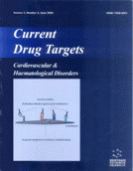Abstract
Lipoprotein-associated phospholipase A2 (Lp-PLA2) is an enzyme that is produced by inflammatory cells, is bound to circulating LDL, and is involved in hydrolyzing polar phospholipids, including those found in oxidized lowdensity lipoproteins. To date, the biological role of Lp-PLA2 in atherogenesis has been controversial, with initial reports purporting an atheroprotective effect attributable to the degradation of platelet activating factor and similar molecules. However, more recent studies suggest a proatherogenic role for this enzyme, which is attributed to Lp-PLA2-mediated hydrolysis of oxidatively modified low-density lipoproteins that results in the accumulation of proinflammatory products. The liberation of lysophosphatidylcholine and oxidized nonesterified fatty acids from oxidized phospholipids by the action of Lp-PLA2 results in diverse inflammatory effects on various cell types involved in atherogenesis. This concept is further supported by a number of recently published epidemiology studies suggesting that plasma levels of the enzyme predict future cardiovascular events independent of conventional risk factors. The development of selective inhibitors of Lp-PLA2 that inhibit enzyme activity in the circulation as well as within human atherosclerotic lesions opens the possibility of therapeutic manipulation of vascular inflammatory processes to reduce residual cardiovascular events in high risk individuals who continue to suffer fatal and nonfatal events despite the current standard of care.
Keywords: Atherosclerosis, inflammation, lipoprotein-associated phospholipase A2, Lp-PLA2
Current Drug Targets - Cardiovascular & Hematological Disorders
Title: Lipoprotein-associated Phospholipase A2: A Potential Therapeutic Target for Atherosclerosis
Volume: 5 Issue: 6
Author(s): A. Zalewski, C. Macphee and J. J. Nelson
Affiliation:
Keywords: Atherosclerosis, inflammation, lipoprotein-associated phospholipase A2, Lp-PLA2
Abstract: Lipoprotein-associated phospholipase A2 (Lp-PLA2) is an enzyme that is produced by inflammatory cells, is bound to circulating LDL, and is involved in hydrolyzing polar phospholipids, including those found in oxidized lowdensity lipoproteins. To date, the biological role of Lp-PLA2 in atherogenesis has been controversial, with initial reports purporting an atheroprotective effect attributable to the degradation of platelet activating factor and similar molecules. However, more recent studies suggest a proatherogenic role for this enzyme, which is attributed to Lp-PLA2-mediated hydrolysis of oxidatively modified low-density lipoproteins that results in the accumulation of proinflammatory products. The liberation of lysophosphatidylcholine and oxidized nonesterified fatty acids from oxidized phospholipids by the action of Lp-PLA2 results in diverse inflammatory effects on various cell types involved in atherogenesis. This concept is further supported by a number of recently published epidemiology studies suggesting that plasma levels of the enzyme predict future cardiovascular events independent of conventional risk factors. The development of selective inhibitors of Lp-PLA2 that inhibit enzyme activity in the circulation as well as within human atherosclerotic lesions opens the possibility of therapeutic manipulation of vascular inflammatory processes to reduce residual cardiovascular events in high risk individuals who continue to suffer fatal and nonfatal events despite the current standard of care.
Export Options
About this article
Cite this article as:
Zalewski A., Macphee C. and Nelson J. J., Lipoprotein-associated Phospholipase A2: A Potential Therapeutic Target for Atherosclerosis, Current Drug Targets - Cardiovascular & Hematological Disorders 2005; 5 (6) . https://dx.doi.org/10.2174/156800605774962103
| DOI https://dx.doi.org/10.2174/156800605774962103 |
Print ISSN 1568-0061 |
| Publisher Name Bentham Science Publisher |
Online ISSN 1568-0061 |
 2
2Related Articles
-
Palladium-Catalyzed Oxyarylation, Azaarylation and α-Arylation Reactions in the Synthesis of Bioactive Isoflavonoid Analogues
Current Organic Synthesis Human Immunodeficiency Virus-Mononuclear Phagocyte Interactions:Emerging Avenues of Biomarker Discovery, Modes of Viral Persistence and Disease Pathogenesis
Current HIV Research Heart Transplantation in Biventricular Congenital Heart Disease: Indications, Techniques, and Outcomes
Current Cardiology Reviews Metabolomics Analysis for Biomarker Discovery: Advances and Challenges
Current Medicinal Chemistry Approaches to Target Profiling of Natural Products
Current Medicinal Chemistry Protective Effect of Natural Antioxidants on Heart Against Ischemia-Reperfusion Damage
Current Pharmaceutical Biotechnology Therapeutic Targets to Raise HDL in Patients at Risk or with Coronary Artery Disease
Current Vascular Pharmacology Vitamin E - Occurrence, Biosynthesis by Plants and Functions in Human Nutrition
Mini-Reviews in Medicinal Chemistry Potential Cell Signalling Mechanisms Involved in Differential Placental Angiogenesis in Mild and Severe Pre-Eclampsia
Current Vascular Pharmacology Analysis of Homocysteine in Plasma of Rats Exposed to High-fat Diet and Chronic Unpredictable Mild Stress by LC/ESI-MS/MS
Current Analytical Chemistry Recent Advances in Image-Based Stem-Cell Labeling and Tracking, and Scaffold-Based Organ Development in Cardiovascular Disease
Recent Patents on Medical Imaging Mitochondrial Aldehyde Dehydrogenase, A Potential Drug Target for Protection of Heart and Brain from Ischemia/Reperfusion Injury
Current Drug Targets Pre-Emptive Conditioning of the Ischemic Heart
Cardiovascular & Hematological Agents in Medicinal Chemistry Development of Gene Therapies for Cardiovascular and Renal Diseases by Nucleic Acid Medicines
Medicinal Chemistry Cardiovascular Disease Risk and Hormone Replacement Therapy (HRT): A Review Based on Randomised, Controlled Studies in Postmenopausal Women
Current Medicinal Chemistry Development of a Registry for Down Syndrome in the Gulf Area of the Middle East
Applied Clinical Research, Clinical Trials and Regulatory Affairs Taking Risk Prediction to the Next Level. Advances in Biomarker Research for Atherosclerosis
Current Pharmaceutical Design Role of Thrombin Activatable Fibrinolysis Inhibitor in Endocrine and Cardiovascular Disorders: An Update
Recent Patents on Endocrine, Metabolic & Immune Drug Discovery (Discontinued) 3D Cell and Scaffold Patterning Strategies in Tissue Engineering
Recent Patents on Biomedical Engineering (Discontinued) Global Cerebral Ischemia: Synaptic and Cognitive Dysfunction
Current Drug Targets














